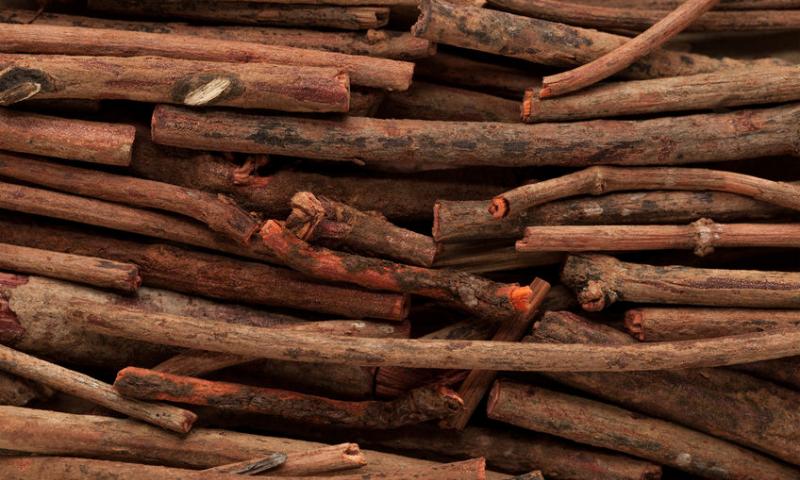 />
/>
COMMON NAME: Madder
LATIN NAME: Rubia Tinctoria
ORIGIN: Asia
HABITAT: In the wild, it grows in Dagestan, Azerbaijan and other regions of the Caucasus, in the Crimea, in Central Asia, as well as in areas with temperate and tropical climates of Africa and America. It grows in riverbank shrubs, steppe meadows, and forest edges, in bright pine forests, orchards, vineyards and along fences. Madder grows on the sands, loams, and continuous soils of solonetzes.
BOTANICAL INFORMATION:
The Rubiaceae family is one of the largest among angiosperms. It includes 450-500 genera and 6000-7000 species of plants that are distributed throughout the globe. The genus Rubia has about 55 species of herbaceous plants, as well as shrubs.
Rubia Tinctoria is a perennial herbaceous plant with a height of 30 cm to 1.5 meters. The rhizome of the plant is long, horizontal, branched, reddish-brown outside, orange-red inside. The stems are tetrahedral, oppositely branched. Large curved thorns are located on the sides of the stems, with the help of which Madder clings to the plants located nearby. The leaves of the plant are arranged in whorls of 4-6 pieces. The flowers of the plant are small, yellowish-green, at the ends of the branches are collected in umbrella inflorescences. The fruits are black, juicy, berry-like drupes with 1-2 seeds. The blooming period is from June to August. The fruits ripen in August-November.
CHEMICAL COMPOSITION:
The rhizomes of the plant contain organic acids (citric, malic, tartaric), triterpenoids, anthraquinones (ruberitric acid, halosin, purpurin, purpuroxanthin, pseudopurpurin, rubiadin, ibericin and rubiadin, as well as free-form alizarin), iridoids, proteins, pectin and ascorbic acid. In the aerial part, carbohydrates, iridoids, phenolcarboxylic acids and their derivatives, coumarins, flavonoids (quercetin, kempferol, apigenin, luteolin, etc.) were found; in the leaves - iridoids and flavonoids; in the flowers - flavonoids rutin and hyperoside. The rhizomes and roots contain ash, macronutrients, and trace elements.
INTERESTING FACTS AND ADDITIONAL INFORMATION:
In ancient centuries, the rhizomes and roots of Madder were valued in Rome, Greece, Persia, and Egypt. Persistent red dye was obtained from the plant roots. In those days, Madder was almost the only plant that was used to dye cotton, wool and silk fabrics.
In the ancient period, it was a budget replacement for expensive purple. Through the Alps, the plant moved to Central Europe thanks to the Benedictine monks.
In France during the VIII-XIX centuries there were large plantations of Madder. This is because the soldiers had red pants, but there were no synthetic dyes at that time and, accordingly, a large number of Madder roots were required for the production of the uniform until the First World War.
*This article is for informational purposes only. We suggest consulting a physician before using these or any other herbal supplements.
